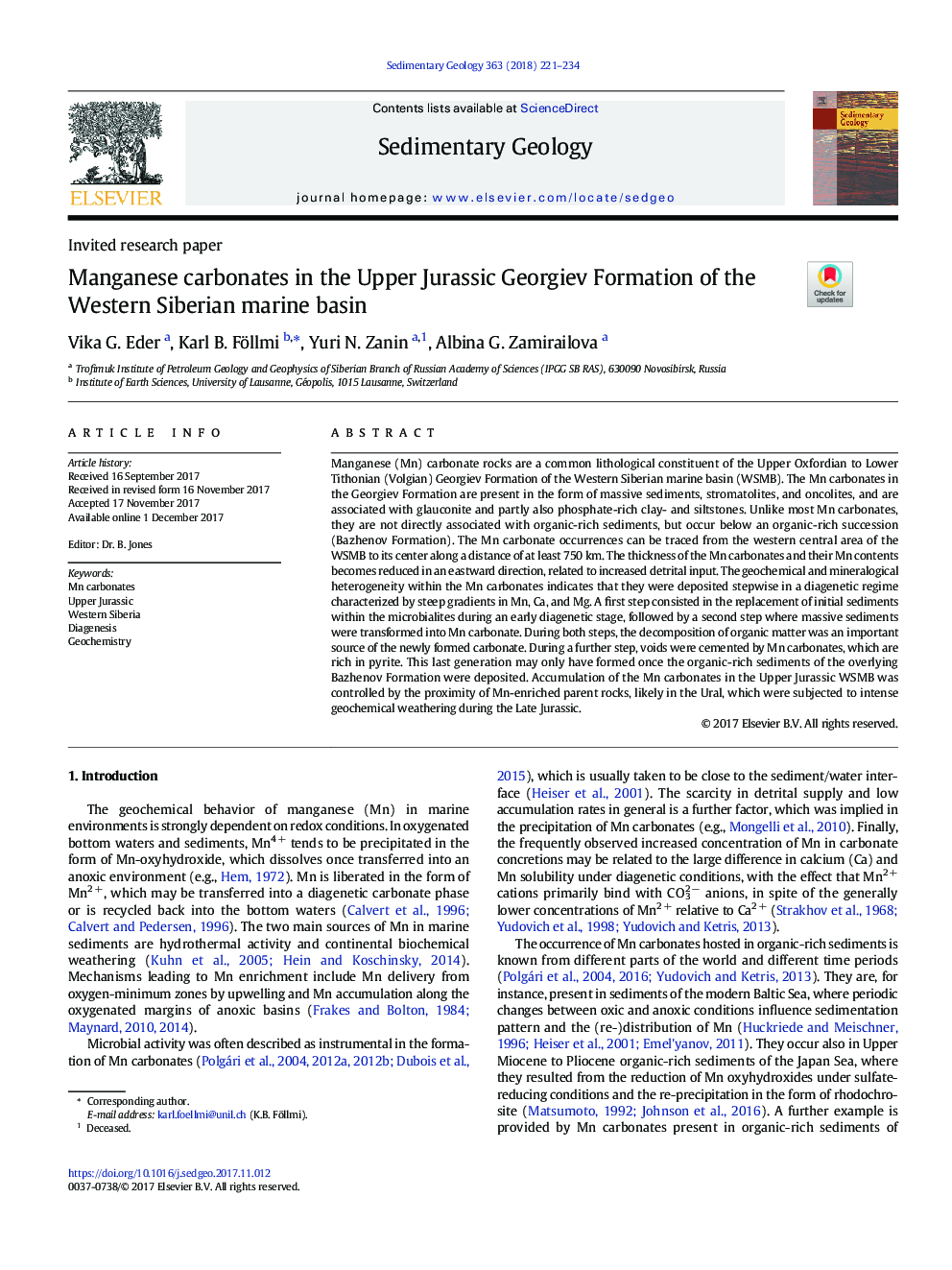| کد مقاله | کد نشریه | سال انتشار | مقاله انگلیسی | نسخه تمام متن |
|---|---|---|---|---|
| 8908577 | 1636000 | 2018 | 14 صفحه PDF | دانلود رایگان |
عنوان انگلیسی مقاله ISI
Manganese carbonates in the Upper Jurassic Georgiev Formation of the Western Siberian marine basin
ترجمه فارسی عنوان
کربنات منگنز در تشکیل ژوراسیک بالا جورجیف از حوضه دریای غربی سیبری
دانلود مقاله + سفارش ترجمه
دانلود مقاله ISI انگلیسی
رایگان برای ایرانیان
کلمات کلیدی
موضوعات مرتبط
مهندسی و علوم پایه
علوم زمین و سیارات
فرآیندهای سطح زمین
چکیده انگلیسی
Manganese (Mn) carbonate rocks are a common lithological constituent of the Upper Oxfordian to Lower Tithonian (Volgian) Georgiev Formation of the Western Siberian marine basin (WSMB). The Mn carbonates in the Georgiev Formation are present in the form of massive sediments, stromatolites, and oncolites, and are associated with glauconite and partly also phosphate-rich clay- and siltstones. Unlike most Mn carbonates, they are not directly associated with organic-rich sediments, but occur below an organic-rich succession (Bazhenov Formation). The Mn carbonate occurrences can be traced from the western central area of the WSMB to its center along a distance of at least 750Â km. The thickness of the Mn carbonates and their Mn contents becomes reduced in an eastward direction, related to increased detrital input. The geochemical and mineralogical heterogeneity within the Mn carbonates indicates that they were deposited stepwise in a diagenetic regime characterized by steep gradients in Mn, Ca, and Mg. A first step consisted in the replacement of initial sediments within the microbialites during an early diagenetic stage, followed by a second step where massive sediments were transformed into Mn carbonate. During both steps, the decomposition of organic matter was an important source of the newly formed carbonate. During a further step, voids were cemented by Mn carbonates, which are rich in pyrite. This last generation may only have formed once the organic-rich sediments of the overlying Bazhenov Formation were deposited. Accumulation of the Mn carbonates in the Upper Jurassic WSMB was controlled by the proximity of Mn-enriched parent rocks, likely in the Ural, which were subjected to intense geochemical weathering during the Late Jurassic.
ناشر
Database: Elsevier - ScienceDirect (ساینس دایرکت)
Journal: Sedimentary Geology - Volume 363, January 2018, Pages 221-234
Journal: Sedimentary Geology - Volume 363, January 2018, Pages 221-234
نویسندگان
Vika G. Eder, Karl B. Föllmi, Yuri N. Zanin, Albina G. Zamirailova,
